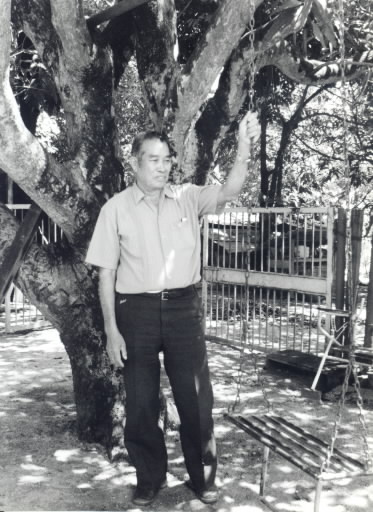7. The Future of Bukit Merah
Feb. 27, 2013
Chapter 4: India, Malaysia, Korea
Part 2: Thorium Contamination in Malaysia
Part 2: Thorium Contamination in Malaysia
"I've lived in Bukit Merah for thirty years, and I've never been more concerned about my family or the future of the village." These were the words of Chong Kim Choy, aged seventy-three, one of the plaintiffs in the suit being brought against ARE. His brow furrowed as he glanced at the photographs of his children and grandchildren. Three years ago, fifteen members of his family had lived on the same land two hundred yards from the refinery. Now only he and his wife are left. The others have gone to live in Ipoh, afraid of being exposed to radiation in Bukit Merah. They come to visit sometimes, but never stay.
The village of Bukit Merah was created by the British after the Second World War, when they regained control of the country after the Japanese defeat. Chinese immigrants were settled there in 1951 as part of a strategy to cut off support for the Communist guerrillas, who at that time were fighting for independence. Being an artificially created town, its streets run in a grid pattern, and the houses are neatly arranged in rows. These days, many of the houses are empty. "They've all left the village. Some because of work, but most for fear of radiation," Chong informed us.
In 1985 Bukit Merah had a population of eleven thousand. In four years that figure dropped to seven thousand. The number of households has also decreased, from fourteen hundred to twelve hundred. Increasingly, the remaining households are made up solely of elderly couples like the Chongs.
"I remember that before we knew anything about the radiation, I used to take the grandchildren for walks by that thorium dump," he continued. "One of them is always getting fevers and is very sickly. My daughter-in-law is not in the best of health, either. When we realized these problems were caused by that thorium, I had no choice but to tell them to go and live somewhere safer. So one by one, they've left..."
Chong took us to see the village of Taman Badrishah, a new residential area about half a mile from the ARE complex. Civil servants and bank workers from Ipoh started to move out here in the late 1970s. The homes are newer than those in Bukit Merah, and there are several apartment buildings. Strangely enough, though, there are more vacant homes here than in Bukit Merah. Chong explained that the people have higher incomes here, so it is easier for them to move out. Of the five hundred houses in Taman Badrishah, two hundred are vacant. The asking price for most is much lower than would be expected, but still there are few buyers. Fear of radiation has caused a steady migration from the area around the ARE complex. Most of those who leave are young, and they take with them the future of the village. Their absence is a tragedy particularly for the Chinese, who traditionally like to have three or four generations live together under one roof.
In September 1987 Chong gave the following testimony in the Ipoh High Court. "I don't care whether it was the Ministry of Health or the Ministry of Trade that gave ARE permission to operate. What I care about is the health of the people of Bukit Merah. I want ARE with its poisonous radiation to get out." Chong admitted he has had a lot of sleepless nights since the appearance of leukemia and the unusually high incidence of disabled children in the village. "Mitsubishi Chemicals says that the ARE plant is helping the people of Malaysia, but it's never brought us anything but pain," he said, turning to his wife for confirmation.







